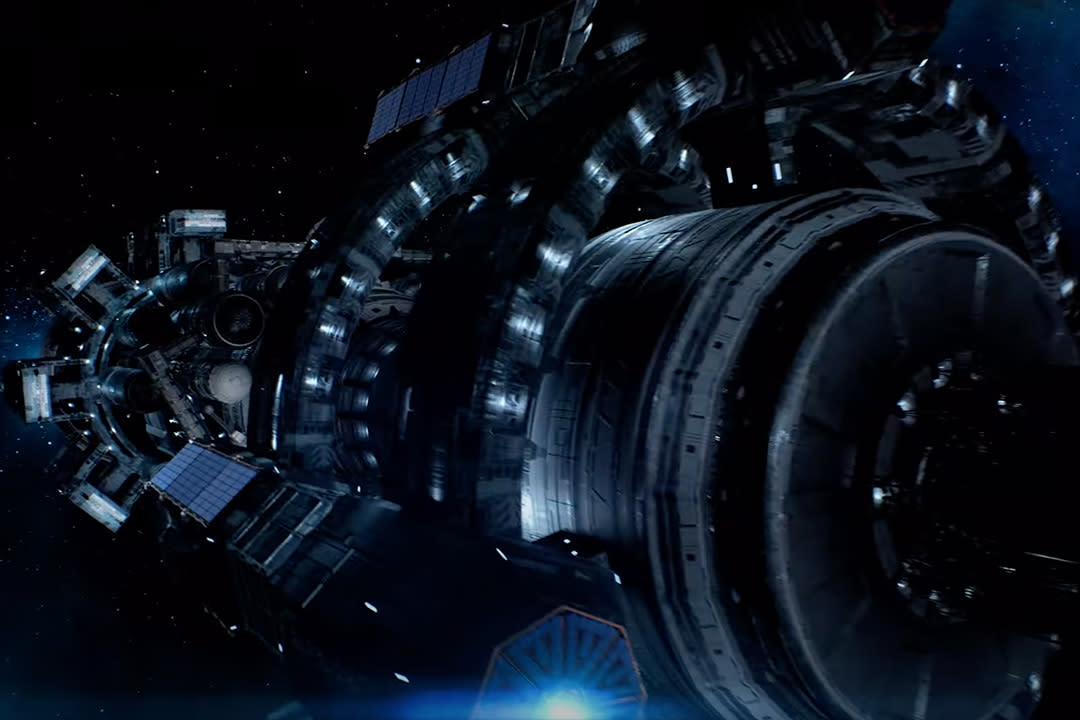NASA Prepares for Launch to Golden Asteroid Worth $10 Quintillion

In SYFY's The Ark (streaming now on Peacock!), humanity takes its first steps into deep space, on a one-way trip to Proxima centauri. Those sorts of adventures remain only in the real of fiction for now. So far, humanity has been limited to low-Earth orbit and, on a handful of ocassions, the vicinity and surface of the Moon. Our machines, however, are getting out there, venturing into deep space, and one of them is about to set off for one of the most valuable rocks we've ever seen.
NASA's Psyche spacecraft, named for the asteroid it intends to visit, has spent the last year at the Astrotech Space Operations facility near NASA's Kennedy Space Center. There, folks from the Jet Propulsion Laboratory (JPL) are working on final assembly and testing in advance of a planned October 5 launch. The spacecraft is headed for the asteroid 16 Psyche, roughly 279 kilometers (173 miles) across and orbiting inside the asteroid belt. Getting there will take a trip of roughly 4 billion kilometers (2.5 billion miles) and approximately six years. But when Psyche gets there, it'll have a front-row seat to one of the biggest gems in the solar system.
The Staggeringly Valuable Asteroid 16 Psyche
We've known that Psyche has existed for centuries, but only recently realized how valuable it might be, both in economic and scientific terms. Previous remote observations have suggested that Psyche might be the leftover core of a failed planet, from the construction phase of our solar system. Astronomers believe that because it appears to be comprised almost entirely of exposed metals like iron, nickel, and gold. If we could get our hands on such a massive piece of space, it would be worth more than the combined global economy, at an estimated $10 quintillion.
RELATED: Psyche is an asteroid that might have been the ancient core of a wrecked planet — or was it?
Psyche's real value, howeer, is an opportunity to get a peek at what our own planet's core might be like. On Earth, we have to infer the shape, structure, and qualities of the planet's core using seismic readings. It's like trying to reconstruct an elephant buried beneath rubble, using only X-rays. Psyche offers an opportunity for scientists to get an unobstructed view of a planet's core, and a greater understanding of how planets are made.

This illustration depicts the metal-rich asteroid Psyche, which is located in the main asteroid belt between Mars and Jupiter. Photo: NASA/JPL-Caltech/ASU
Over the last year, the Psyche team has been working around the clock to finish the spacecraft, including a recent test campaign of the flight software before installing it on the craft. Now, they're tightening the bolts and buttoning up the panels to get it ready for launch.
“The team and I are now counting down the days to launch. Our focus has shifted to safely completing the final mechanical closeout of the spacecraft and preparing the team for operations. The team is conducting numerous training activities to ensure that we are prepared and ready. It’s a very busy time, but everyone is very excited and looking forward to the launch,” said Henry Stone, Psyche’s project manager at NASA’s Jet Propulsion Laboratory in Southern California, in a statement.

NASA's Psyche spacecraft is shown in a clean room on Dec. 8, 2022, at Astrotech Space Operations Facility near the agency's Kennedy Space Center in Florida. Photo: NASA/Ben Smegelsky
The spacecraft will be mounted to a SpaceX Falcon Heavy rocket, which will push it to its destination in the asteroid belt. In addition to scoping out one of our system's treasure hoards, the mission will also serve as a testbed for technologies which could be used for crewed missions in the future. The launch itself will be the first interplanetary mission for the Falcon Heavy, laying the groundwork for future Mars missions. It will also carry an optical deep space communications system, part of NASA's ongoing work to build an updated space communications network.
RELATED: NASA Will Test Laser Communications on Artemis II, Increasing Space Bandwidth
After getting into low-Earth orbit, Psyche will blast off toward the asteroid belt using solar electric propulsion. Six years later it will rendezvous with Psyche and set up camp for a 26-month mission. But this is only a prospecting mission. Psyche is going to look, not to touch. If you want to grab a piece of space gold, you're going to have to do it yourself.
Of course, venturing into deep space isn't always the safest idea. Just ask the crew of The Ark, streaming now on Peacock!

